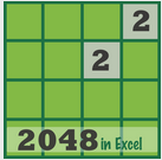The cost of computers, smart phones and data collection sensors has decreased over the last decade, which brought an explosion of the number of devices being used around the world. This digital transformation is creating an enormous amount of data, which by itself is not always particular helpful. We need to turn data into better decisions in order to improve our products and services. One the best analytical and visualization tools that interface with Excel is the free mathlayer numerical library.
Mathlayer is a FREE C++ mathematical library allowing to call Matlab/Octave code from Microsoft Excel. The mathlayer UI add-in powered by Ribbon Commander offers a user-friendly UI for searching online help articles, executing commands and managing variables.
The library is not COM addin, so mathlayer DLLs must be loaded in memory by running the mathlayer.xlam VBA addin. The DLLs bind to an Excel instance and remain loaded in memory as long as that instance of Excel is open.
Mathlayer is a FREE C++ mathematical library allowing to call Matlab/Octave code from Microsoft Excel. The mathlayer UI add-in powered by Ribbon Commander offers a user-friendly UI for searching online help articles, executing commands and managing variables.
The library is not COM addin, so mathlayer DLLs must be loaded in memory by running the mathlayer.xlam VBA addin. The DLLs bind to an Excel instance and remain loaded in memory as long as that instance of Excel is open.
Global Variables in Excel
Surprisingly, mathlayer variables are not stored in any particular workbook and persist in memory during the lifetime of an Excel instance. Variables have an application wide scope and are not destroyed, even if the workbook used to declare them is closed. For all practical purposes, mathlayer variables are truly global to the entire Excel application and can be shared among Excel macro-free workbooks and VBA projects without setting any references. Mathlayer variables and the data contained in them will survive after a VBA runtime error or even if the VBE stop button is clicked!
Available mathlayer data types:
Available mathlayer data types:
- Double: matrix with real numbers
- Double (complex): matrix with complex numbers
- Logical: matrix with 1 or 0 values
- Char: matrix with characters
- String array: column vector containing variable length strings (used for tables)
- Cell: matrix containing any type of objects
- Struct: object mapping identifiers to objects
- Table: each column contains an object
- Function handle: stores a reference to a function







